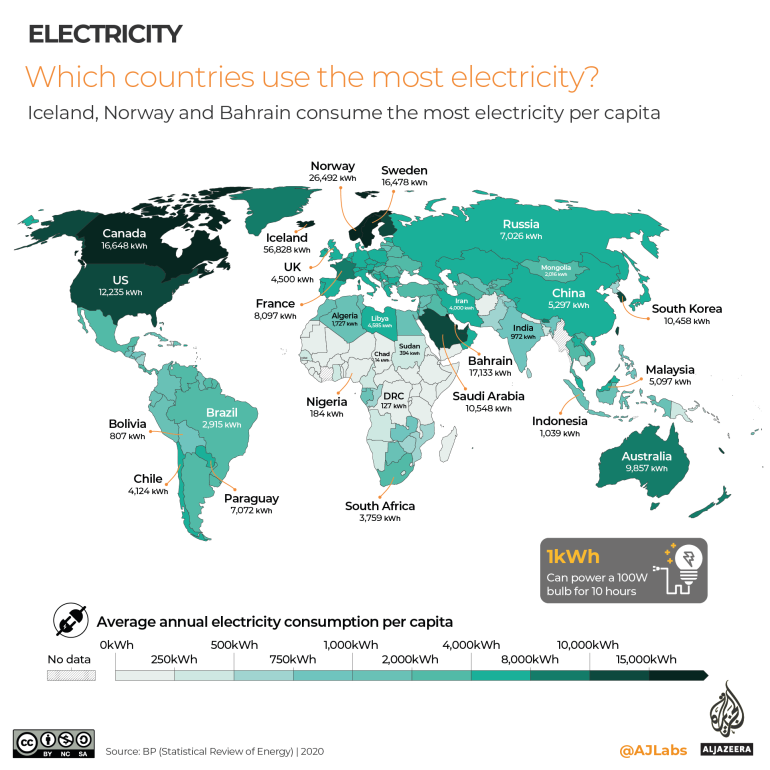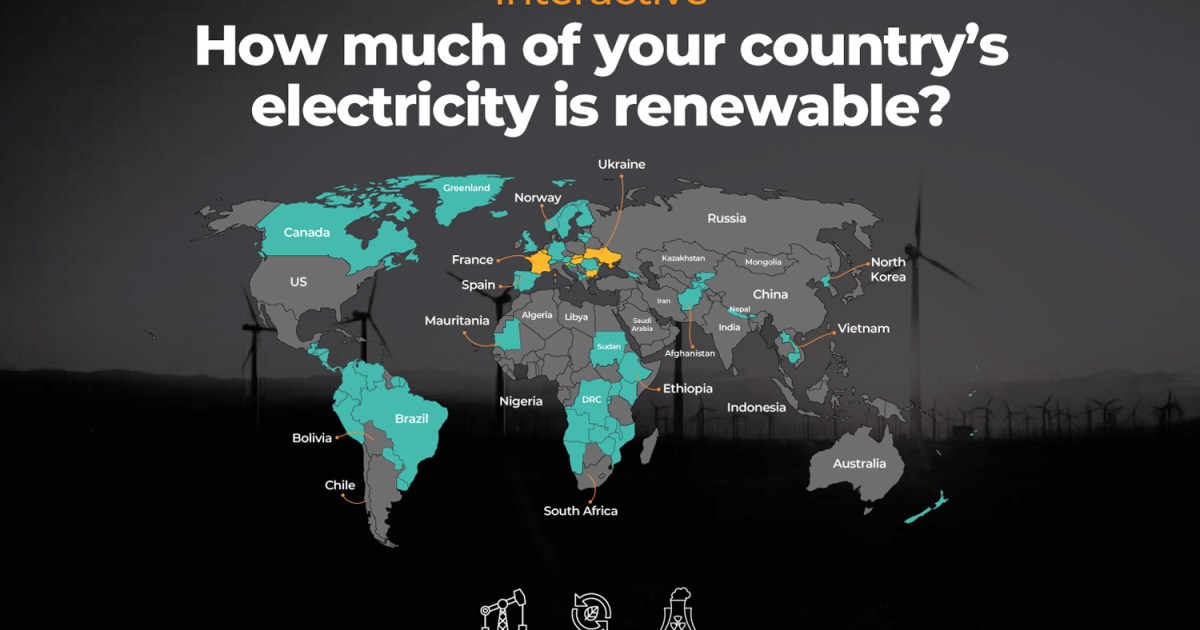Interactive: How much of your country’s electricity is renewable? | Infographic News
About 30 percent of the world’s electricity comes from renewables, including hydropower, solar and wind among others.
The demand for energy is growing fast.
The world’s annual energy consumption nearly tripled from 62,949 terawatt-hours (TWh) in 1969 to 173,340TWh in 2019.
As of 2020, nearly 80 percent of the world’s energy was made by burning fossil fuels – oil, coal and gas.
Renewable energy, including hydropower, solar, wind and biofuels, accounted for just over 10 percent, with nuclear and traditional biomass making up the remainder.
This energy is needed for transport, heating and generating electricity.
About 30 percent of the world’s electricity comes from renewables, including hydropower, solar and wind among others.
In the following infographics, Al Jazeera breaks down how the world’s electricity is consumed:

The electricity divide
While 90 percent of the world’s population has access to electricity, the remaining 10 percent – 760 million people – do not.
According to the International Energy Agency (IEA), access to electricity is quantified as a household being able to provide:
- basic lighting of four lightbulbs five hours a day
- running a refrigerator
- power to charge a mobile device or operate a television for four hours per day
- a fan running for six hours a day
In 29 countries, mostly in sub-Saharan Africa, less than 50 percent of the population has “access to electricity”.
In 2019, more than 90 percent of Chad’s population was unable to access electricity.
This stands in contrast to high-income countries whose populations have complete access to electricity.
Who consumes the most electricity?
The largest electricity consuming countries per capita are Iceland (56,828kWh), Norway (26,492kWh) and Bahrain (17,133kWh).
Iceland, the cold Nordic country with a population of about 366,000, has an abundance of renewable energy sources, including geothermal and hydropower.
In recent years, Iceland has also been a hub for cryptocurrency mining, which, according to the Icelandic Blockchain Foundation, is where at least eight percent of all Bitcoins have been mined.
On the other end of the scale, Benin, Chad and Afghanistan each consume less than 30kWh per capita.

Countries’ main source of electricity
As many as 134 countries (65 percent) generate most of their electricity from fossil fuels, 66 countries (31 percent) from renewables, and seven countries (four percent) from nuclear energy.
Just five countries – Albania, Bhutan, Lesotho, Nepal and Paraguay – produce 100 percent of their electricity from renewable energy, mostly in the form of hydroelectricity from dams.
Three European nations – France, Slovakia and Ukraine – generate most of their electricity from nuclear power.

How much of your country’s electricity comes from renewable sources?
Do you know which countries generate the least amount of electricity from renewables?
Select your country then drag the slider below to guess the amount of electricity – from zero to 100 percent – that comes from hydropower, wind and solar.




